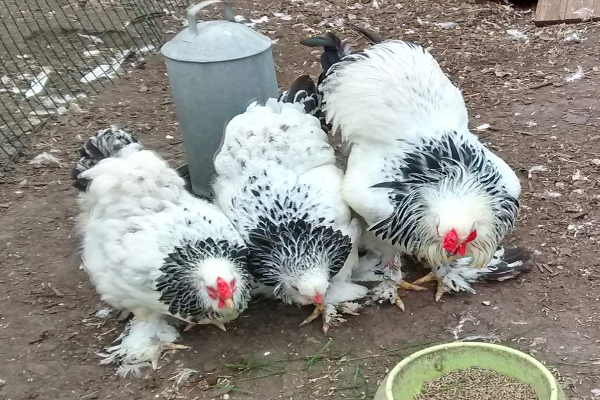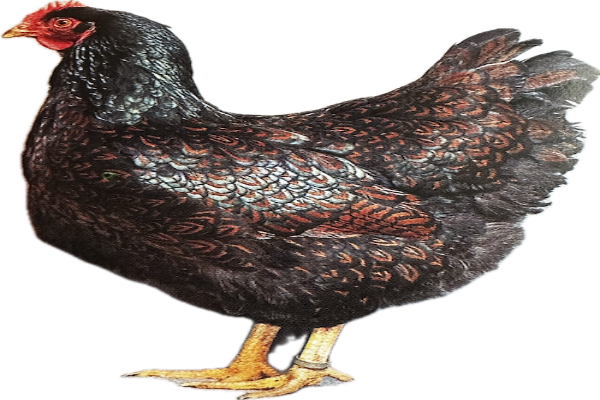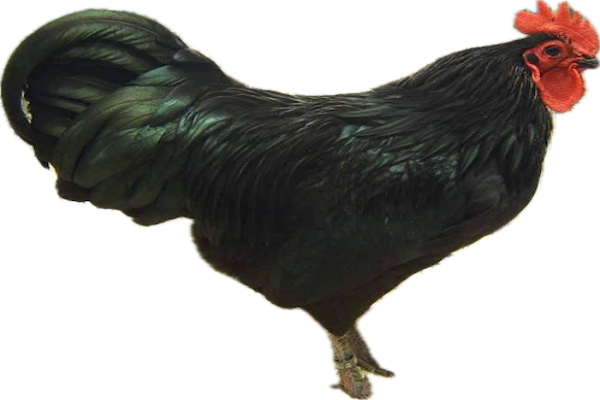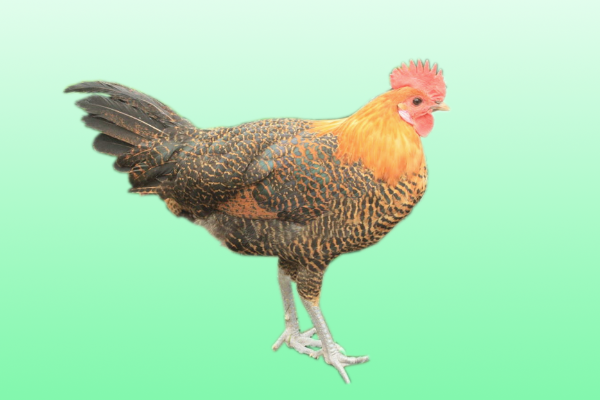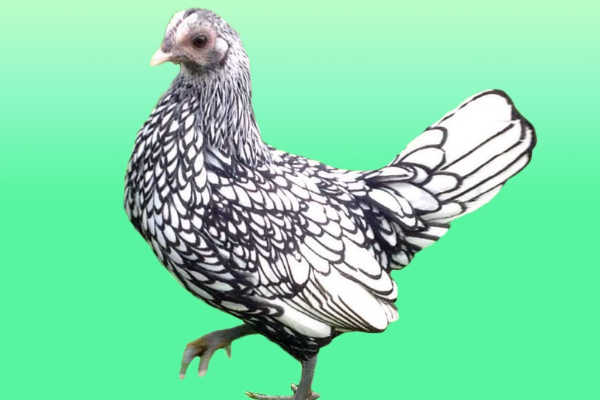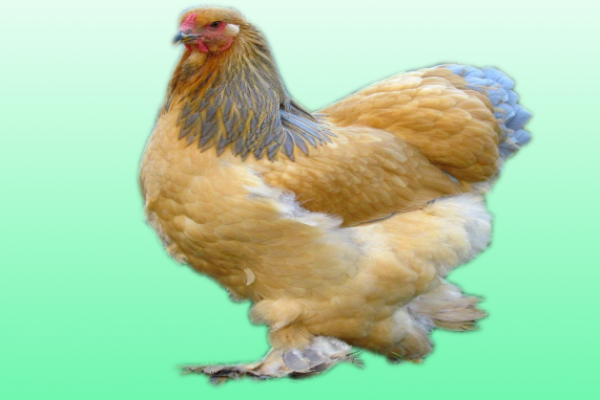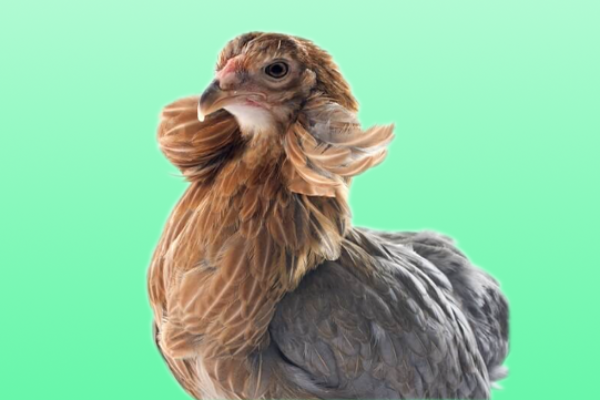Brahma Chickens
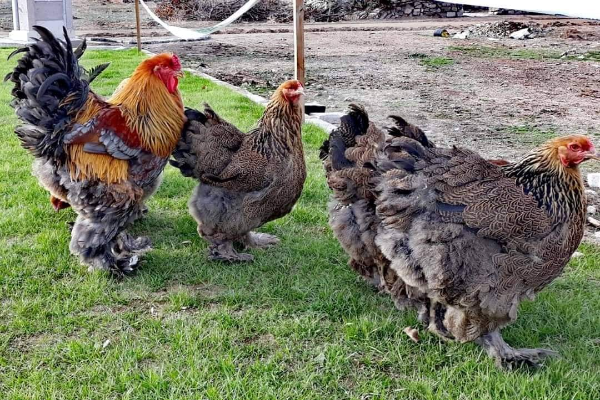
The Brahma chicken breed is a huge and impressive bird, with males weighing about 4.5-5.5 kg.It is often referred to as the gentle giant of the poultry world, and its placid good nature and easy-going ways win many a convert to the World of poultry keeping.These gentle birds make excellent pets for children.
What is The History Of The Brahma Chicken?
The Brahma is an American breed of chicken.Brahmas arrived in the UK around 1840-1850. It was developed in the United States from birds imported from the Chinese port of Shanghai and was the principal American meat breed from the 1850s until about 1930.
The name Brahma comes from the river Brahmaputra in India although the species was created in America from large feather legged birds known as Shanghais which were imported from China in the 1840s. At first there were many different strains and at least a dozen different names for the breed At a meeting of poultry judges in Boston in 1852, agreement was reached to name it "Brahmapootra"; this later became "Brahma"
Brahmas were first exported to England in December 1852, when George Burnham sent nine "Gray Shanghaes" to Queen Victoria as a gift. The Dark Brahma variety was developed by English breeders from this stock, and later re-exported to the United States. Both the light and the dark (pencilled) Brahma were included in the first British Poultry Standard, published by the original Poultry Club of Great Britain in 1865.
The head is small for such a large bird and the face is smooth and free from feathers with large, prominent eyes, short strong beak and a triple or pea comb and small wattles. The brow is broad which produces heavy eyebrows. They are well known as being one of the largest breeds of chicken and are often called 'The King Of Chicken Breeds'.
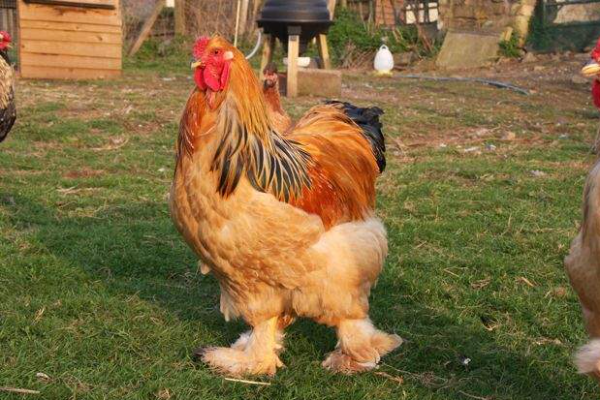
What we know now is the ship was likely to have come from Shanghai, stopping off in India. We also know that there were Shanghais and Cochins with feathered feet in China. The British were in India during this time and most kept some poultry with a good knowledge of the various breeds. There are no accounts of chickens fitting the description of the Brahma, or even birds with feathered feet, most were game types like the fighting cocks such as the Asil.
Brahmas were kept very much as a utility breed in the US whereas in the UK they went in the opposite direction – they were kept for exhibition and as ornamental birds, losing their utility qualities.
It was thought Dark Brahmas did have some Indian blood. Some stock from India was used to refine them. The Dark never really took off in America but the British preferred the Dark Brahmas and quickly went about refining them for exhibition. In order to get the correct markings, breeders had to double mate (have separate Cock breeder and Pullet breeder birds that didn’t conform to the standards but produced correctly marked offspring
What are the Characteristics of Brahma Chicken Breed?
• Brahmas are very large, stately, docile birds who make good reliable broodies which can cover a large number of eggs due to their size. The eggs are small and low in number but chicks hatch strongly and grow quickly
• Their feathering is beautiful and they are very elegant birds.
• Hens don't start to lay until they are around six or seven months old and the eggs are as small as those of the larger miniature breeds
• Brahma chicken will happily stay behind 2-3 foot fencing and prefer dry conditions because of their foot feathering they can develop mud balls (or fecal balls) on their toes. If this is not removed, the loss of nails or the tips of the toes may result. Probably the best way to get these balls off the feet is soaking in warm water.
• The Brahmas are slow maturing and take two years to reach maturity.
• They spawn 3-4 medium brown eggs each week.
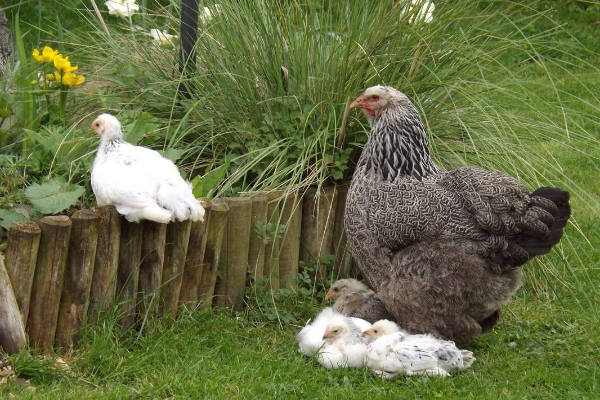
• Brahma chicken breed do continue laying throughout the winter unlike some pure breeds.
• They are tolerant towards other breeds so can be kept together with other varieties without any problems and can even be submissive towards others despite their large size. Even cocks will tolerate each other.
• The Brahmas make very little noise and even the cockerels do not crow particularly loudly. The profuse feathering makes them very good at withstanding cold winter weather.
• Brahma chickens usual only require attention to parasites such as lice, mites and worms. As they have feathered feet, scaly leg mite can be a problem too so keep a close eye on those legs and feet.
What Are The Color Varieties Of The Brahma Chicken Breed?
Color standards are divided into 2, American and British.
Three color varieties are recognised by the American Standard of Perfection: light, dark, and buff.
The British Poultry Standards have more colour varieties of Brahma: Dark, Light, White, Gold, Blue Partridge and Buff Columbian.
The light Brahma has a base color of white, with black hackles edged in white and a black tail; the saddle-feathers of the cock are striped with black.
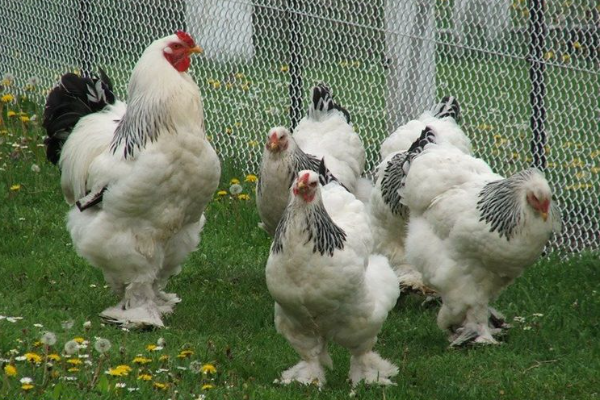
The dark Brahma has the most notable difference between cock and hen: the hen has a dark gray and black penciled coloration with the same hackle as the light, whereas the cock has black and white hackles and saddle feathers, and a black base and tail; the wings are white-shouldered, and the primary feathers are edged with white.
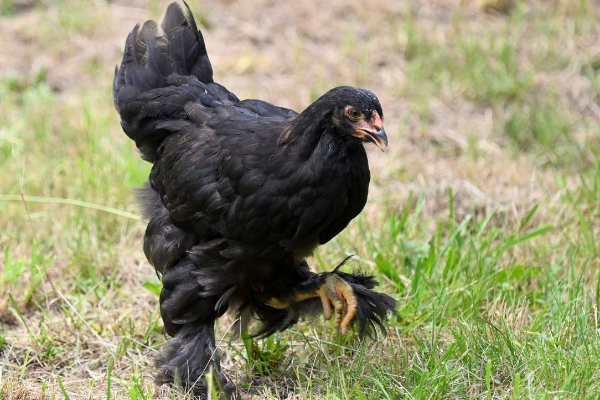
The Buff Brahma has the same pattern of black as the light, but with a golden buff base color instead of white.
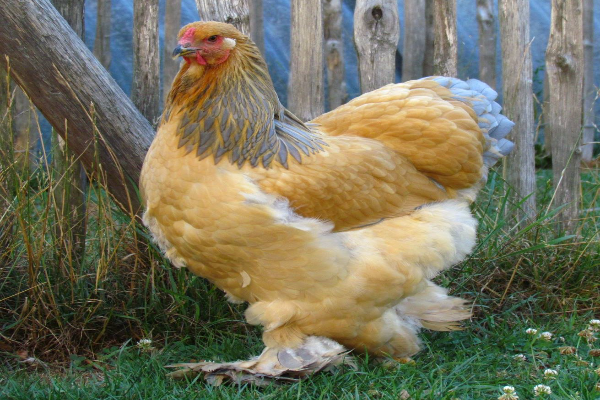
How Should Coop of Brahma Chicken Breed Be?
The Brahma is a big bird so they need more space than the average chicken.
Brahma coops will need a little adaptation.Perches should be low to avoid damage to the birds leg and feet when they jump down in the morning, and doors must be big enoug to accommodate their huge frame.
5-6 square foot for each chicken in the coop.
Do not go below this as less space leads to anti-social behaviors such as pecking and feather picking.
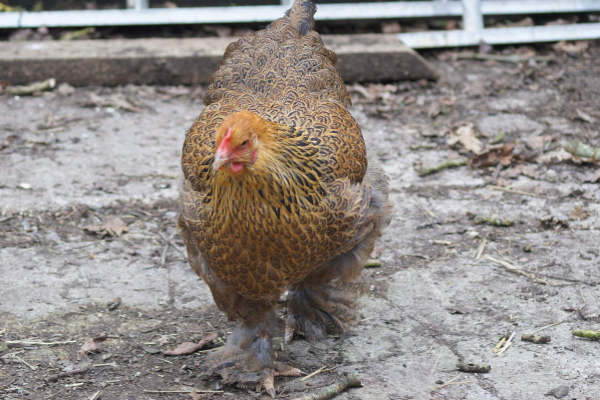
As for roosting space give them around 8-10 inches each. As these big birds struggle to fly perches should be fairly low for them to access (12-18 inches tall). If you make the perches too high you run the risk of a leg or foot injury when they come down from the roost.
Whilst Brahmas can fit into a 12″x12″ nesting box they will appreciate a larger 14″x14″ box. These extra few inches create a bit of maneuvering room.
Brahmas are not escape artists and will stay behind a low fence with no problems, as the do not fly.
What is The Weight Of Brahma Chicken Breed?
Weight averages about 5.5 kg (12 lb) for cocks and 4.5 kg (9.9 lb) for hens.
| Country of origin: | United States |
| Type: | Large type |
| Average Annual Egg Production: | 150 - 200 |
| Colours /Varieties: | Light, dark, and buff |
| Comb: | Pea Comb |
| Use: | Eggs, exhibition, meat, pets |
| Male Weight: | 5.5 kg Bantam: 850-900 g |
| Female Weight: | 4.5 kg Bantam: 800-850 g |
| Egg Color: | Brown |
| Egg Size: | Medium to large |
| Egg Laying Age: | 28-30 weeks |
| Egg Productivity: | Low to medium |
| Climate Tolerance: | The profuse feathering makes them very good at withstanding cold winter weather |
| Breed Size: | Large |
| Life Span: | 5 to 8 years |
| Breed Temperament: | They are docile and friendly |
| Useful to Know: | Brahma chicken will happily stay behind 2-3 foot fencing and prefer dry conditions because of their foot feathering they can develop mud balls (or fecal balls) on their toes. If this is not removed, the loss of nails or the tips of the toes may result and Brahma chicken breed do continue laying throughout the winter unlike some pure breeds. |

Written by
Murat KANAT
Veteriner HekimBreedsMore
IllnessesMore
Forage cropsMore
![]() Патологическая физиология голодания Arina TARAN
Патологическая физиология голодания Arina TARAN![]() Дефицит фосфора (гипофосфатемия) Hipofosfatemi Arina TARAN
Дефицит фосфора (гипофосфатемия) Hipofosfatemi Arina TARAN![]() Какие бывают кормораздатчики для ферм КРС? Irina Makarova
Какие бывают кормораздатчики для ферм КРС? Irina Makarova![]() Кормушки для овец Diana Myakisheva
Кормушки для овец Diana Myakisheva![]() Питание домашних коз: что едят, виды корма и правила кормления Alina Arslantürk
Питание домашних коз: что едят, виды корма и правила кормления Alina Arslantürk![]() Важность минералов питании сельскохозяйственных животных Irina Makarova
Важность минералов питании сельскохозяйственных животных Irina Makarova

